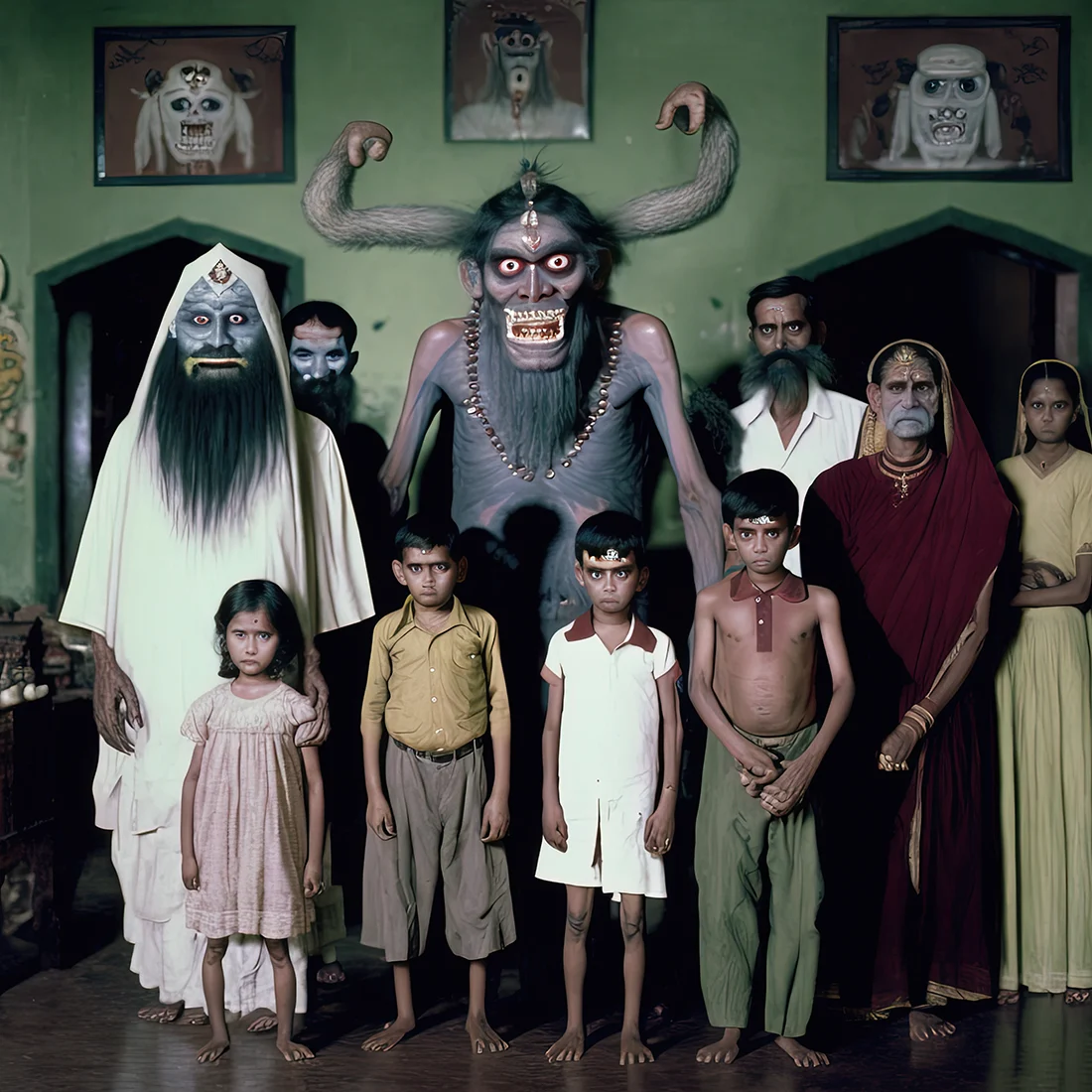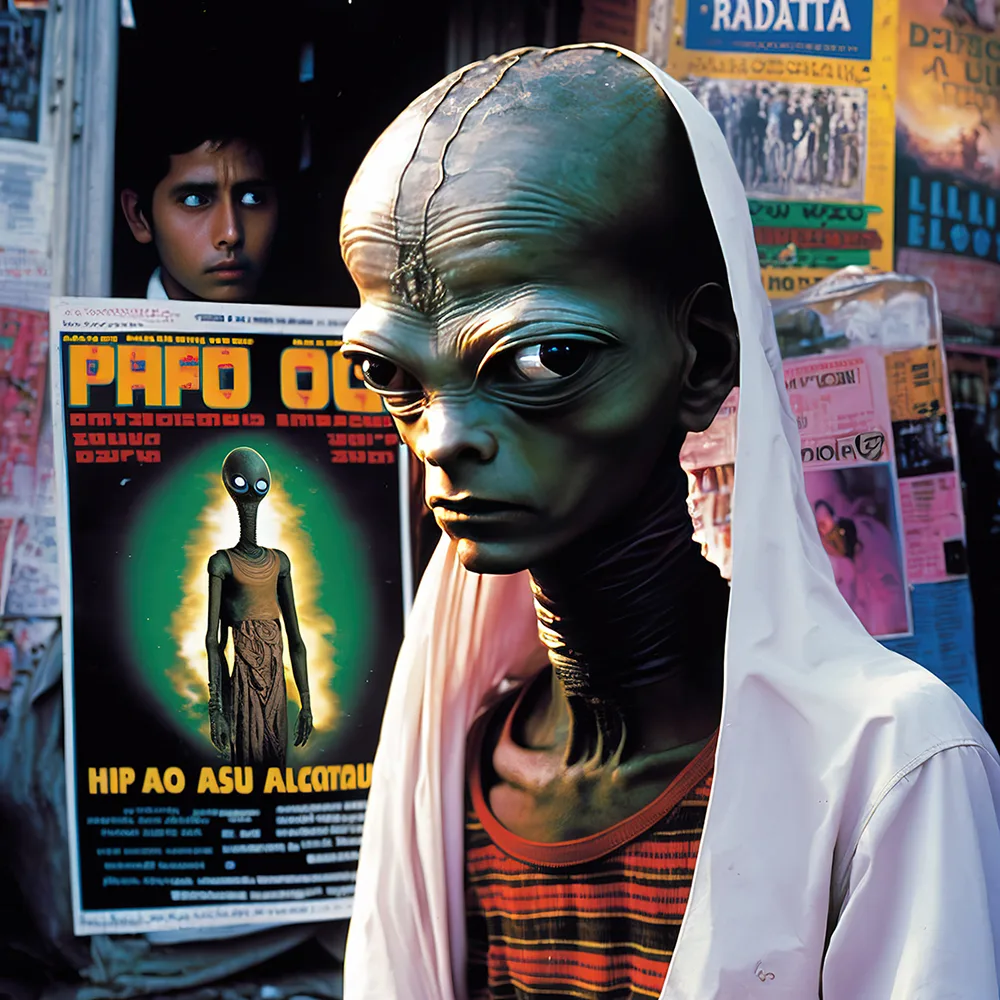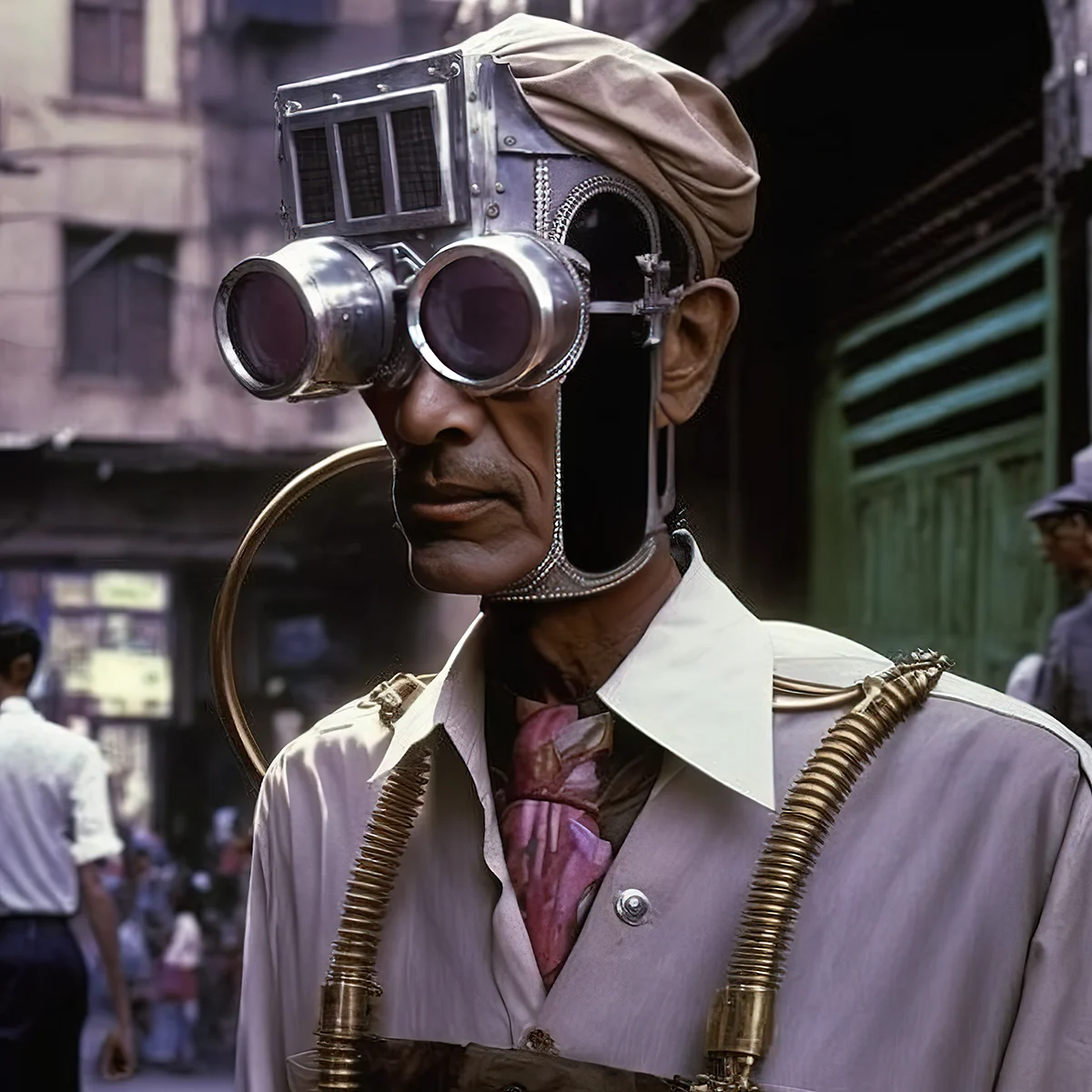

Prateek Arora’s bold visuals created with AI art platform Midjourney are developing a cult following on Instagram. But it’s not just their lifelike quality that’s garnering attention. Focusing on science fiction-inspired Indian characters and scenes, he’s breaking new ground in a genre that has gone largely unexplored in South Asia. Here, he tells writer Alex Kahl about his mission to inspire more investment in South Asian sci-fi projects, and, hopefully, show young Indians a wider variety of heroes who look like them.
In November 2022, Indian screenwriter Prateek Arora posted a selection of family portraits on Instagram. Unlike the ones you or I might have taken over the holidays, though, these portraits included otherworldly beings with horned heads and red eyes, and disconcerting masked figures.
Arora had made the images using artificial intelligence tool Midjourney, and they quickly went viral, with dozens of digital art accounts on the platform resharing and praising them. Like so many of the visuals constructed by these AI tools, the images look remarkably real. But that’s not all that caught people’s attention.


We’re realizing that the world has always put us in a box, and we want to show who we really are and make ourselves heard.
Arora’s Instagram account is dedicated to AI creations that merge South Asian culture with the aesthetics of horror and science fiction, with fantastical characters in futuristic outfits, and alien creatures wandering through bustling streets. “It’s not that Indian film has never ventured into these genres,” he says, “but despite some occasional large projects, the genre never really became a mainstay in Indian entertainment, and still isn't. Most major studios today don't necessarily consider science fiction as an essential part of their slates. In my conversations with people in the industry, I still sense hesitation.”
As Arora says, there is some history of sci-fi in India, from the first Indian science fiction magazine, Aschorjo, published in 1963, all the way up to more recent blockbuster films, like the hugely successful 2011 hit “Ra.One.” But compared to the plethora of western sci-fi works, these projects are a drop in the ocean.
“Everything that gets made in the US has this wealth of history to dip into,” says Arora. This discrepancy not only means that many people might struggle to build a detailed picture of what Indian sci-fi might look like, but also that production companies are wary of touching the genre, as there just aren’t enough success stories from the region.

That’s where AI art like that being made by Arora and others can be useful. It shows the breadth of what Indian sci-fi could be visually, and its popularity demonstrates to film executives and producers, wherever they may be, that there’s an appetite for this aesthetic. In this respect, Arora hopes to be laying the groundwork for more Indian sci-fi films to get the green light. “Some of these things could be more than just aesthetic experiments or moodboards,” Arora says. “I think there are concepts here that, as time passes, can act as proofs of concept that could be adapted into something real. In the process of this experimentation, all of us have started to collectively create, potentially, a bank of stories, characters, worlds, that could become the engine for much larger projects.”
Midjourney isn’t Arora’s primary form of expression. Rather, it supports his main creative outlet. He’s a screenwriter by trade, and currently works as the head of development for Bang Bang, an Indian production company that’s recently been redefining itself as a global content company, with an overarching goal of “decentralizing Hollywood” and bringing South Asian stories to the global stage.




I have this deep belief in what stories can do for all of us in the world.
Historically, Arora says, India’s entertainment industries have been somewhat insular. “In terms of scale, India is a continent on its own, so many of us have spent our lives navigating what’s around us, and we never really thought of ourselves as global citizens,” he continues. “Suddenly, the internet made us part of that global conversation. We’re realizing that the world has always put us in a box, and it’s not a very complimentary one. There’s alot of desire to challenge that, and to show who we really are and make ourselves heard.”
Representation is another important benefit of these AI images: Arora feels they may give a younger generation of South Asians to see a diverse array of characters who look like them. The lack of South Asian representation in major roles in the west is a problem that isn’t restricted to the worlds of sci-fi and horror, and it’s something Arora and the team at Bang Bang are determined to rectify. At the moment, they’re working on a classic spy thriller that sees an Indian actor playing the part of the smart, suave hero. “No tropes,” says Arora. “Just an Indian guy who’s not playing a funny sidekick or a background character.”

On top of all this, streaming platforms and production houses are beginning to realize that the huge global community of South Asians are an incredibly important audience for the future of commerce, and so films made by and for that community are starting to be given more attention. Combine all this, and now seems like the opportune time to tell new, unexpected stories from the region, and science fiction and horror stories may well be a big part of that.
40 percent of Arora’s fast-growing Instagram audience are based in India, which illustrates how much people at home are connecting with his work. But the fact that he has so many followers from elsewhere shows that these scenes, despite their very specific, local aesthetic, can appeal to people around the world.


“Making Indian sci-fi a big thing is a life goal for me,” Arora explains. “I want to take some of these stories and creators and push all of us forward and get the world to take notice. AI is a blessing because it’s meaningfully accelerated that, and I’m happy that I could help catalyze some of that.
“It sounds very lofty and important, but I want to be clear that I also like doing this because I like doing this,” he continues. “If I can have an impact too, I really couldn’t ask for anything more. This started off as a form of personal expression, and now it’s growing into something that speaks to my deeper belief in what stories can do for all of us in the world.”

